Affiliate links on Android Authority may earn us a commission. Learn more.
Samsung Galaxy Note 7 vs iPhone 6s Plus first look
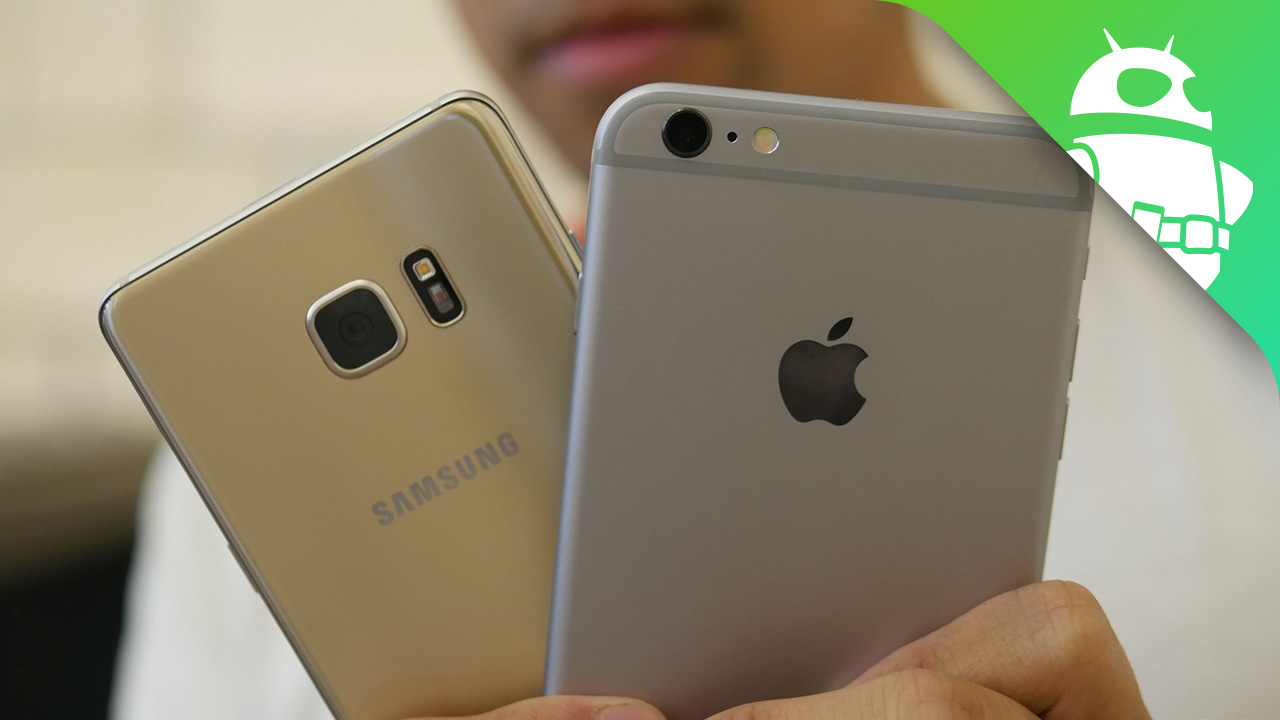
Considered the titans in the mobile space – due to their incredible girth and feature-packed goodness – phablets have fast become the norm amongst consumers. Manufacturers have generally reserved them for being geared towards productivity conscious users, and from the looks of it all, that’s not going to stop anytime soon. In the space right now, however, there are arguably two smartphones that will be scrutinized moreover than most.
Apple’s iPhone 6s Plus is still helping to diversify the company’s smartphone portfolio, by filling in that space for those who love big phones, but Samsung’s upcoming Galaxy Note 7 is shaping up to be the phablet to beat as we head into the fall season. While they both have their own set of specifications, and features, we’ve managed to spend a little of time comparing the two against one another. So with that in mind, let’s dive right on in and see which is the preliminary king of the phablets.
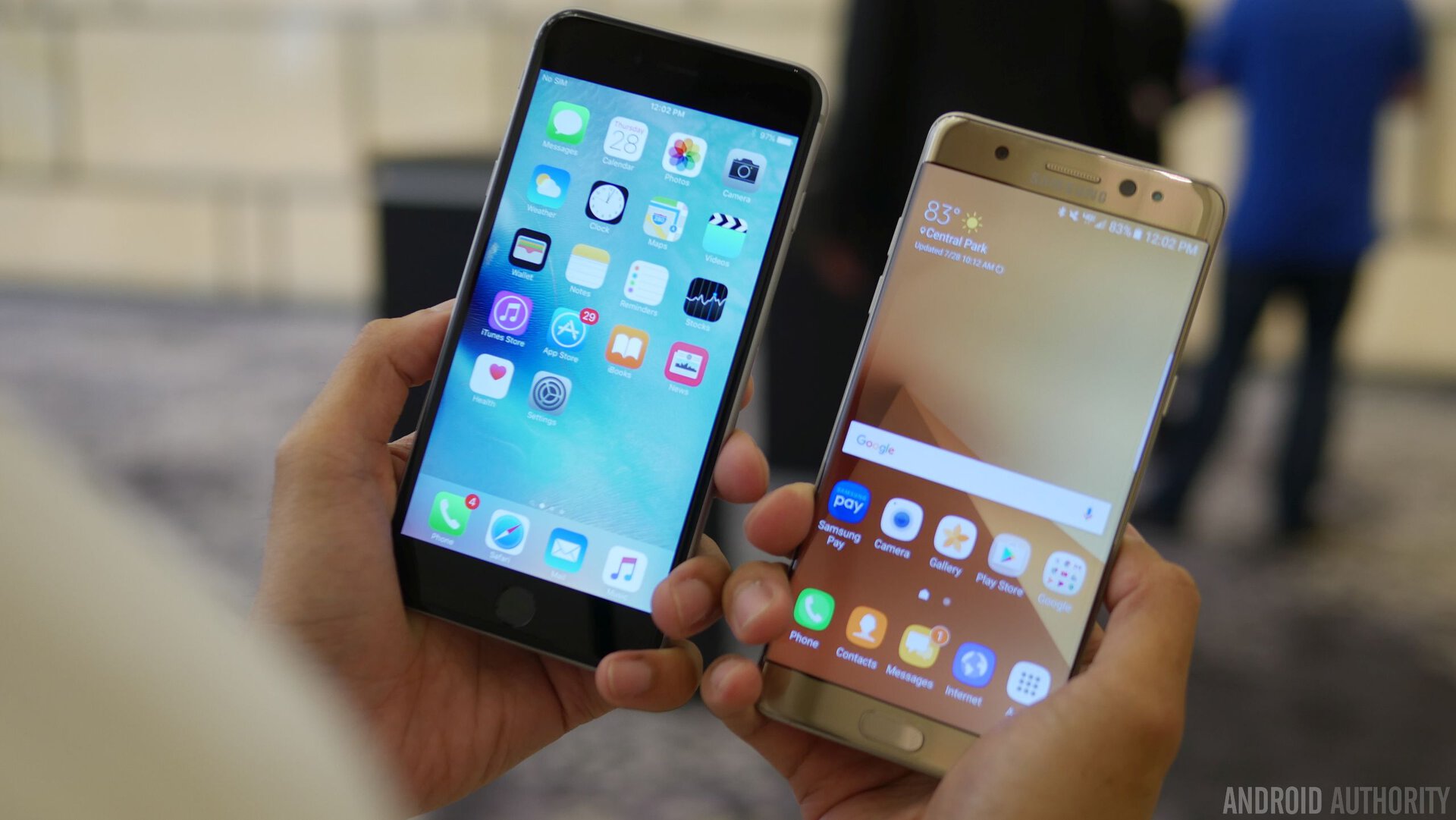
For the most part, these two smartphones exude prime designs that don’t disappoint, mainly because their respective makers have kept a keen eye on every aspect of their constructions. The iPhone 6s Plus’ unibody aluminum chassis manages to keep a cleaner, more uniform look that does nicely to repel finger print smudges. At the same time, the aluminum material definitely gives the phone a stronger sense of sturdiness – something that undeniably gives some people more confidence to its resilience to scratches and minor drops.
What’s most apparent about the two of them, though, is how Samsung has managed to slim down the overall size of the Note 7. It’s pretty amazing to tell you the truth, since the Note 7 is narrower, shorter, and even lighter than its rival, which makes it less unwieldy to hold than the iPhone 6s Plus. Sure, the glass and metal construction makes it a bit more fragile, but Samsung has added one particular change that some will view as forward-moving – and that’s the fact that it’s now water resistant. That’s something that few phones can say that they offer, so it’s a step up from what we’ve been given previously.

If we’re to glaze over the specs of their respective displays, the Note 7 would obviously raise more eyebrows than the iPhone 6s Plus, not only for the fact that it’s able to cram in a larger sized screen, but also because it’s a higher resolution as well. The Note 7 sports a 5.7-inch Quad-HD Super AMOLED screen while a 5.5-inch 1080p Retina Display adorns the front of the iPhone 6s Plus. Don’t get us wrong, the higher resolution is nice, giving it more detail and better pixel density count, but you won’t notice any difference if you’re to look at both screen from a normal viewing distance.
Siding with different display technologies, the characteristics that have preceded their reputation seem to be apparent yet again. The Super AMOLED panel of the Note 7, in particular, offers exceptional viewing angles and that deep pitch black color tone we’re familiar with. Meanwhile, the Retina Display continues to show strong luminance that makes it viewable in the brightest of conditions.
They even have their uniqueness as well, like the 3D Touch feature of the iPhone 6s Plus and the curved edges of the Note 7. While it’s difficult to say at the moment which of the two has the superior display, we can safely say that they don’t disappoint at all either.
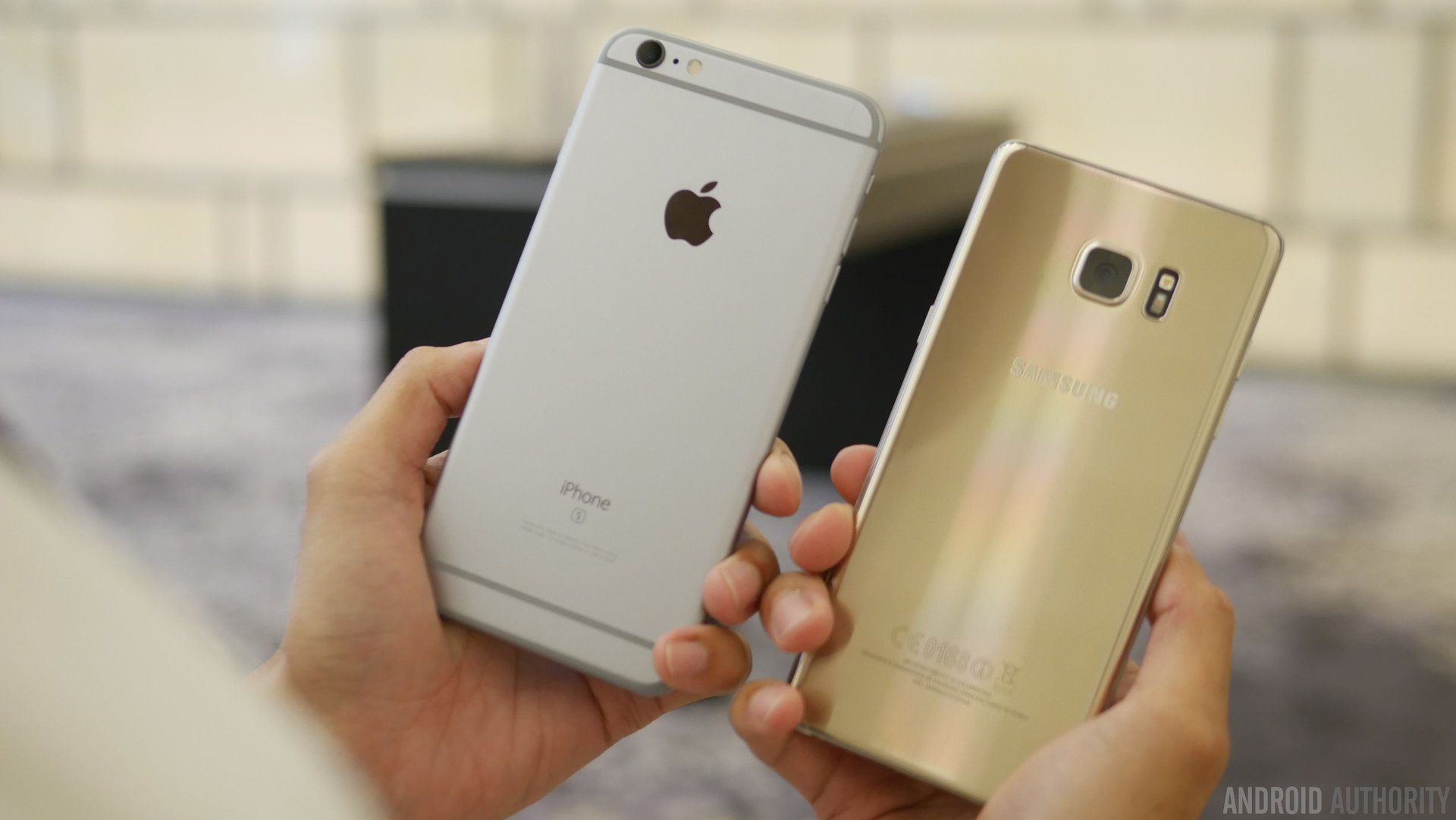
Apple’s iPhones have shown to us all that specs don’t necessarily dictate performance solely, as the dual-core Apple A9 chip and 2GB combination proves that fact with its buttery smooth performance. Whether it’s surfing the web, to playing some of today’s demanding 3D games, Apple’s phablet champion rarely exhibits stutter or sluggishness.
The Note 7 in comparison will be powered by two different chips, the Snapdragon 821 for the US and Exynos 8893 for global markets, coupled with a generous 4GB of RAM. Given the performance output of the two previous chipsets, you can expect even better results with the Note 7 compared to previous Samsung flagships. Right now, we can say that it’s buttery smooth, but it’ll be intriguing if it’ll be able to retain the same level of intensity after months of use.
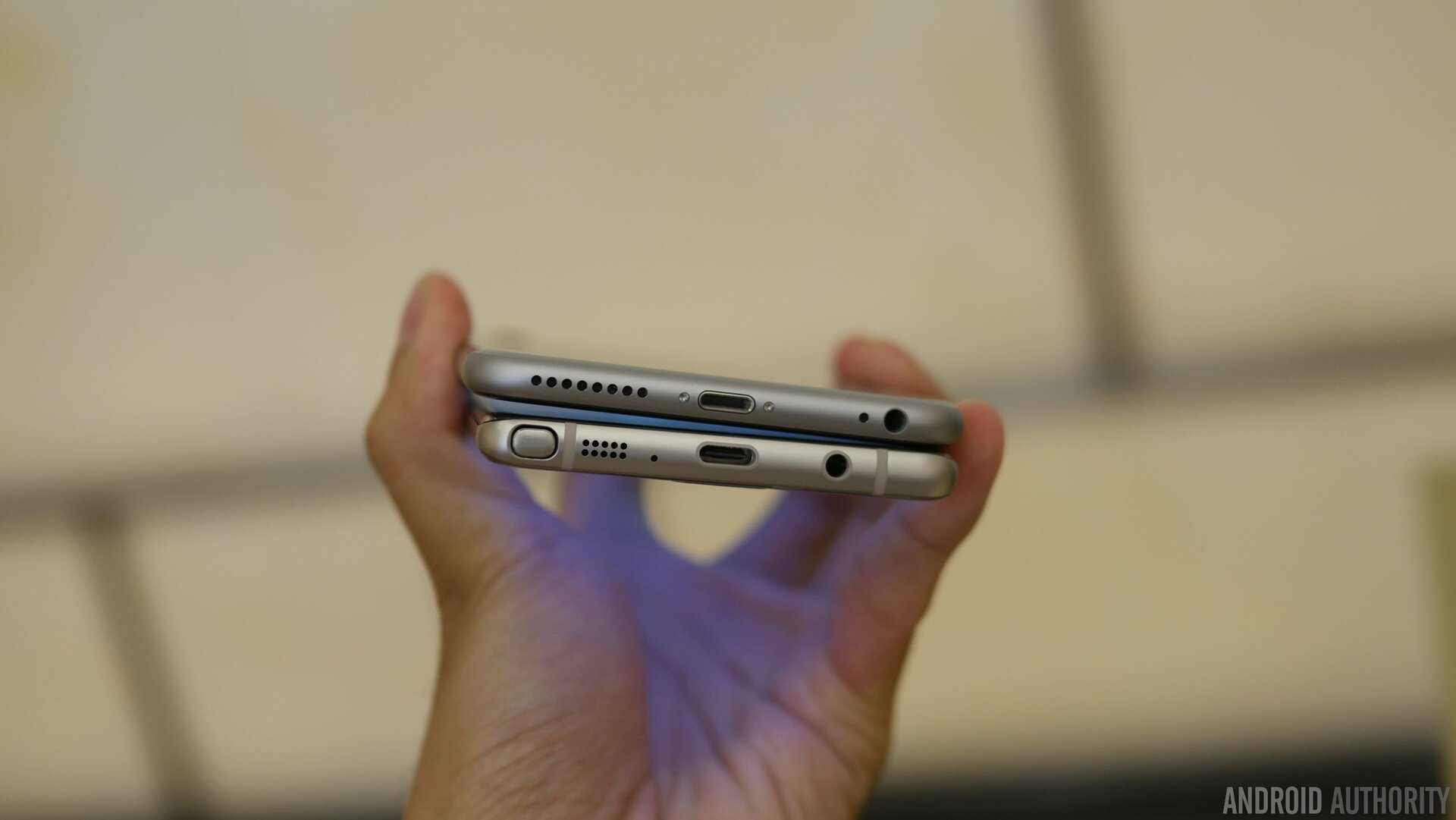
Storage-wise, most people will agree that the Note 7 has an advantage because of its expansion. That’s attributed to the iPhone 6s Plus being made available in three options (16/64/128GB), but with each one, they’re separated by a $100 gap. In contrast, the Note 7 offers users flexibility in the form of its microSD card slot, which helps to supplement its base internal tally of 64GB. Now that’s what we’d like to call generous!
As premium smartphones, it’s no shock to anyone that they each boast their own fingerprint sensors, which are incorporated into their respective home buttons. However, that’s where the similarities pretty much end, since it becomes increasingly evident that Samsung has slapped a ton of other features that you won’t find in Apple’s plablet.
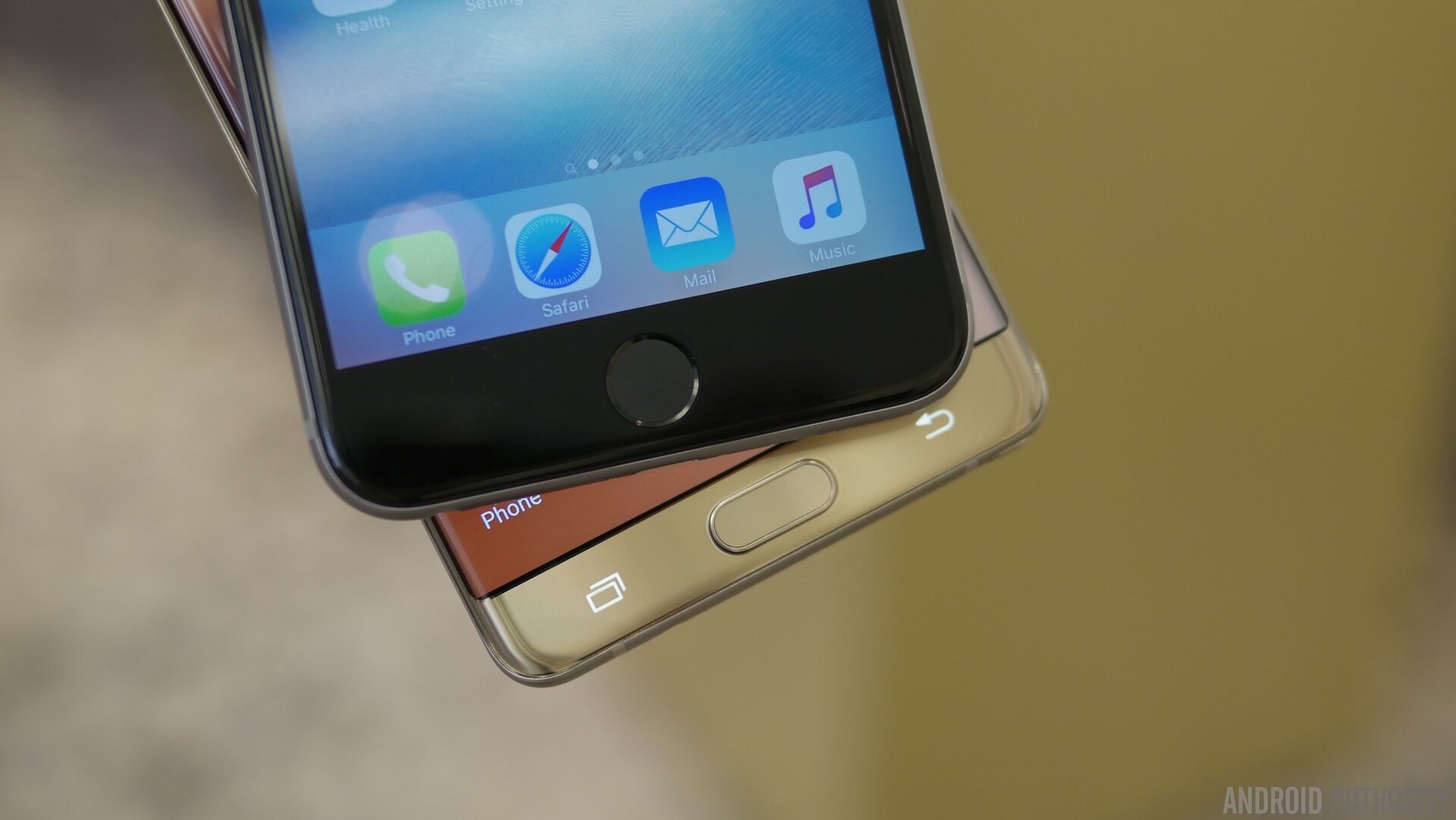
First, let’s talk about the new S Pen – something that has been and continues to be a focal point for the series. Beyond being even more precise when it comes to measuring varying degrees of pressure, Samsung has added water resistance to the S Pen’s design, while also throwing in a barrage of new stuff with the software; such as being able to make gifs.
Secondly, it should be noted that the Note 7 is crammed with other hardware goodies that diversify its overall portfolio. Out of the bunch, the most notable and newest addition is the iris scanner that’s position above the display – allowing for yet another layer of security for the phone. It’s not something you’ll find in the iPhone 6s Plus, naturally. Rounding out the mix, the other goodies found with the Note 7 that aren’t available with the iPhone 6s Plus include the heart rate sensor and wireless charging.
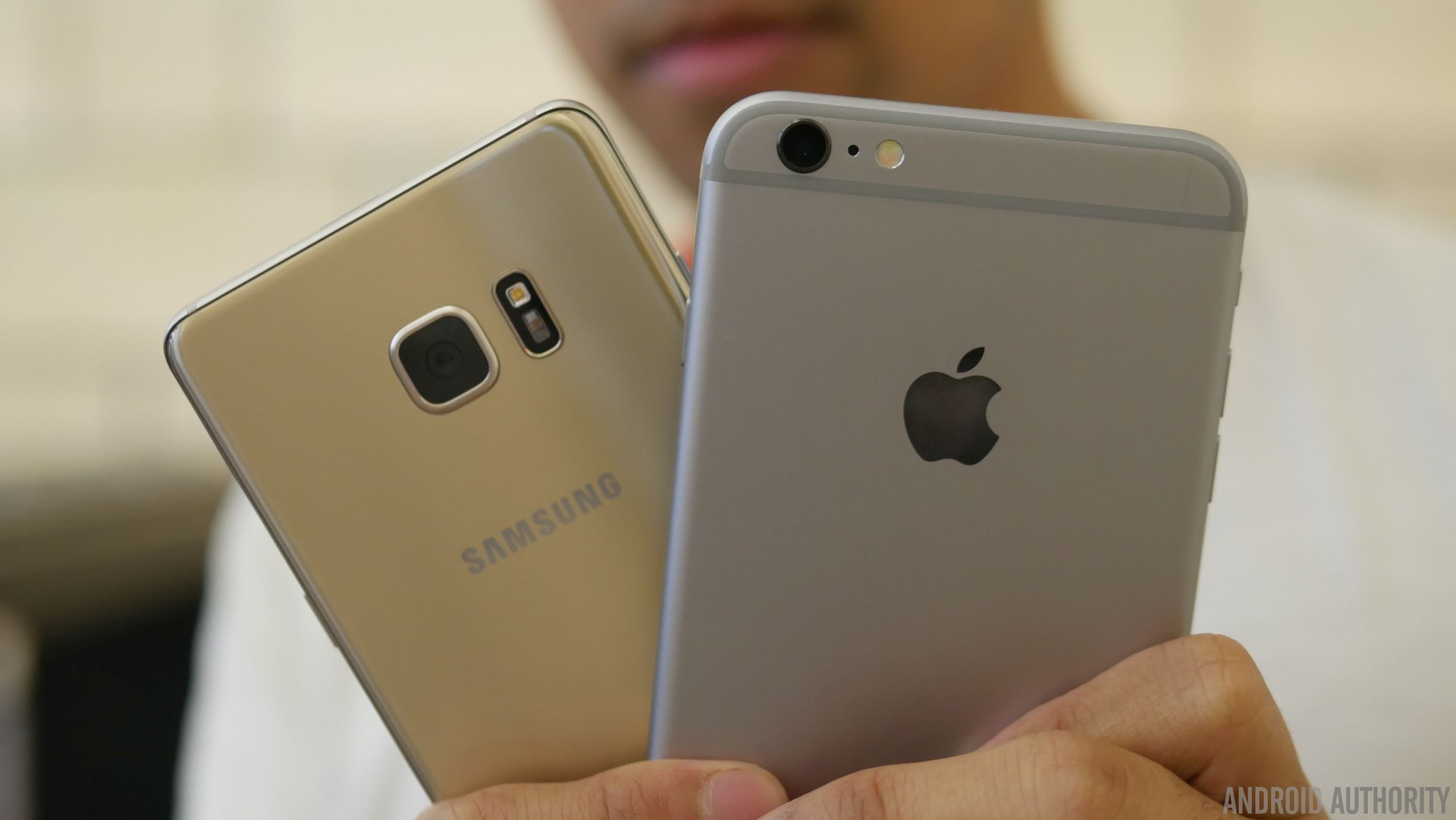
When it comes to cameras, Apple and Samsung have solid reputations with their devices to ensure that whatever they come out with next, they’ll undoubtedly perform solidly to be considered top-performers for the next year. The iPhone 6s Plus’ rear camera, a 12MP 1/3” sensor featuring an f/2.2 aperture lens, phase detection auto-focus, and dual tone LED flash, has proven to be significant contender with its all-around performance. In low light situations even, it has excelled in producing sharp looking images with very little quirks.
Being the newer of the two, Samsung’s new phablet is retooled with a 12MP 1/2.6” sensor, which features a wide f/1.7 aperture lens, OIS, phase detection auto-focus, and dual-LED flash. The specs are solid no matter how you dissect it, but we’re really itching to see its actual performance. Given Samsung’s reputation and existing performance with the Galaxy S7 family, you can bet that this one will surely follow in the same path.
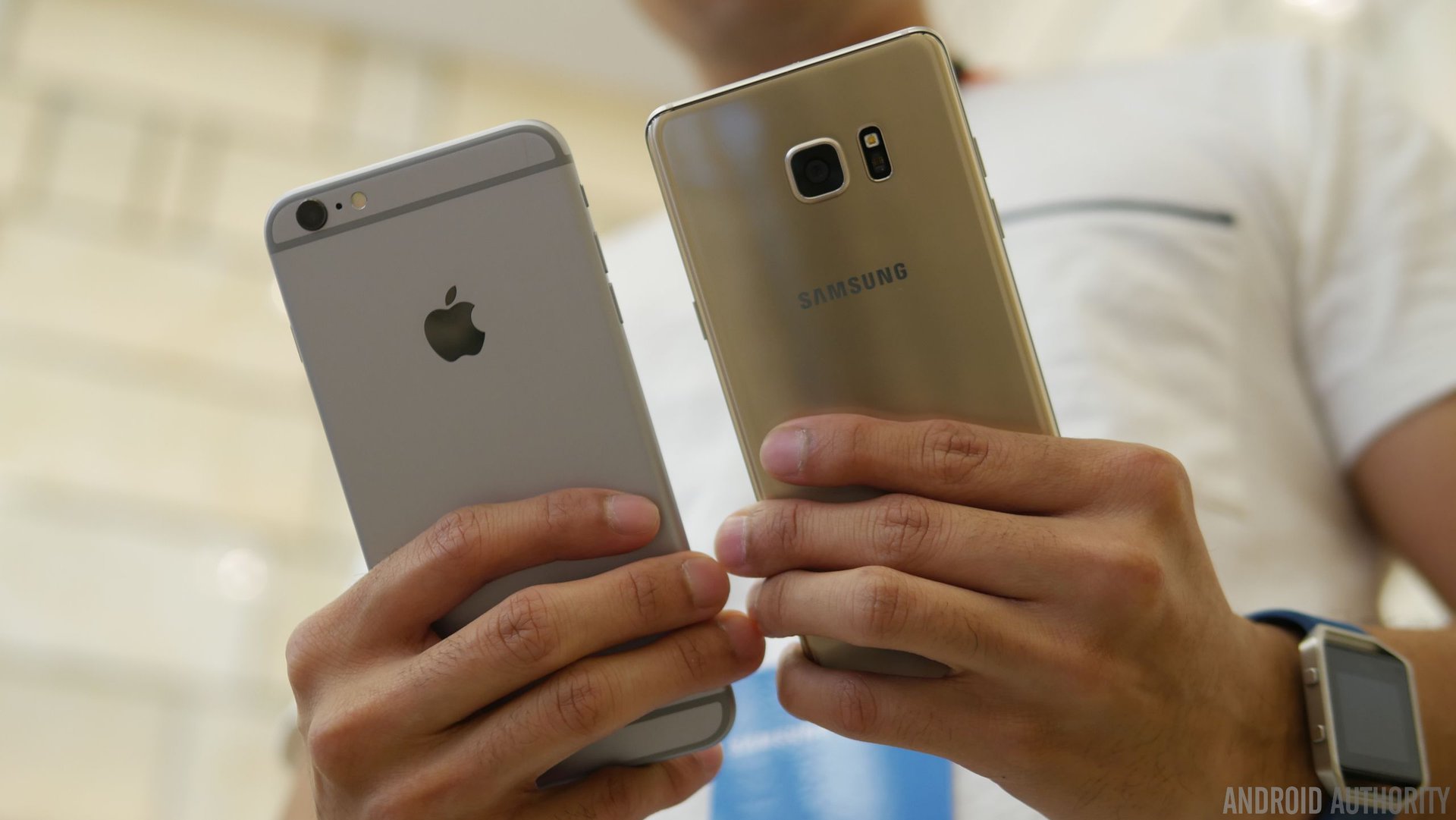
In terms of video, the two can shoot in all sorts of resolutions – from 1080p, all the way up to 4K. What’ll be interesting, though, is if there’s any sort of improvement to its slow motion capture. Right now, the iPhone 6s Plus is excellent when it comes to this, by being able to shoot at 120FPS at 1080p resolution and even 240FPS at 720p. Where the Note 7 has an advantage right now from what we can see, is in the camera’s software because there’s a host of modes to choose from – whereas with the iPhone 6s Plus, it’s still pretty limiting with what it offers.
Apple has taken the path of simplicity and straightforwardness with iOS, something that hasn’t let up with each iteration of the platform. That, actually, is partly why people like Apple’s mobile operating system so much, just because it doesn’t take a rocket scientist to figure out. With the iPhone 6s Plus, the amount of real-estate with its display enables it to be a more appropriate productivity-centric smartphone, thanks to how there’s a certain level of multi-tasking with it, but it still largely doesn’t have the same completeness given off by the Note 7.
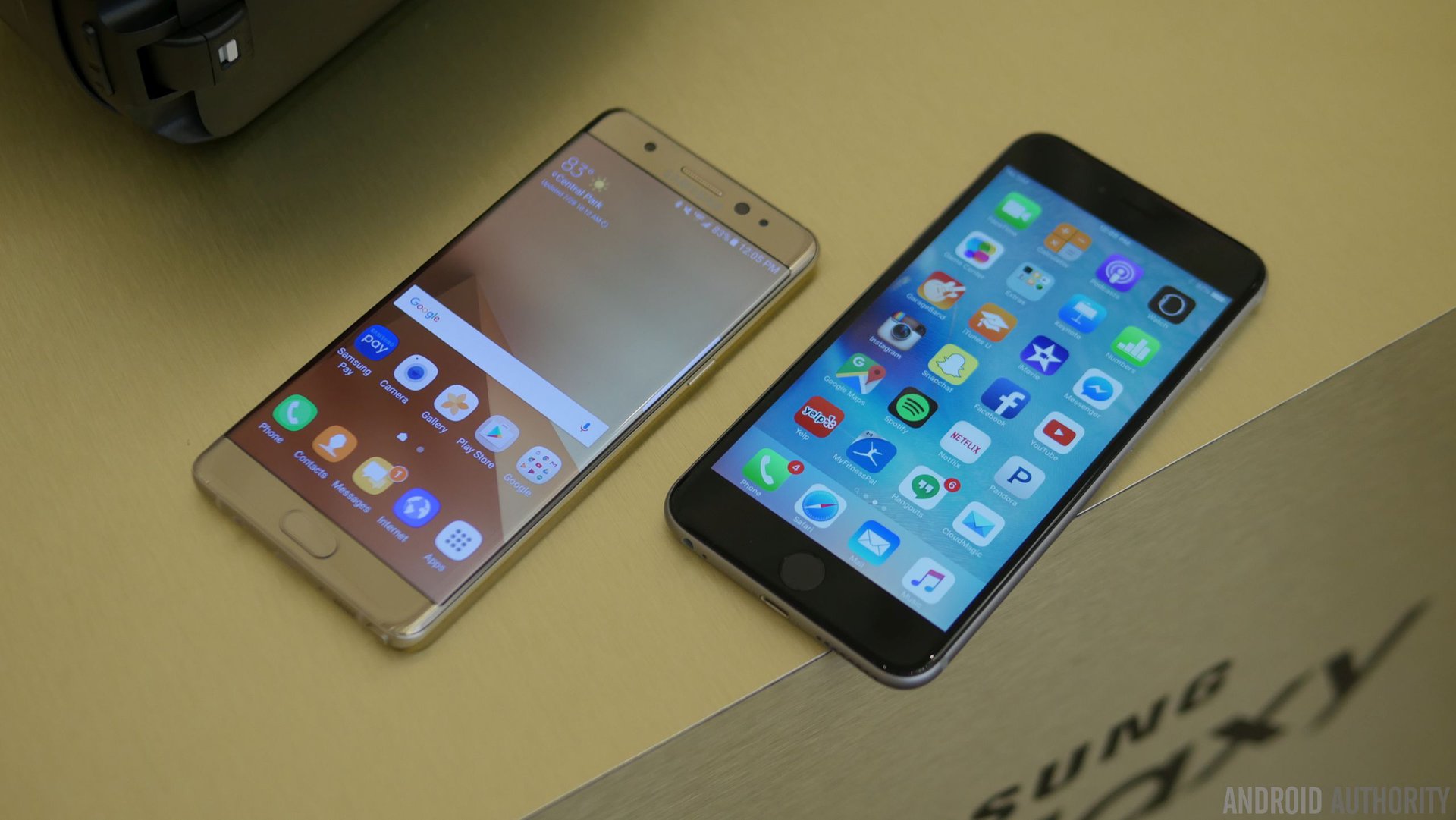
Functionally, the Note 7 is superior and paramount when it comes to this. While the foundation of TouchWiz hasn’t changed dramatically over the last couple devices in the Note line, the Note 7 nonetheless looks set to be the smartphone of choice for users who are serious about getting work done on the move. From its true multi-tasking functionality, to the all the useful situations where the S Pen proves to be invaluable, the Note 7’s customized Android experience is unrivaled.
These two phones really have nothing to prove, that’s just the honest truth. Until the next version of Apple’s phablet is revealed, the iPhone 6s Plus will continue to be a top-contender in the phablet space. Sales alone is an indication of its popularity, proving that there’s still plenty of gas left in the tank for this one. And you know what? The Samsung Galaxy Note 7 will certainly find itself as a top-contender as well, not because of all that’s new with it, but for the fact that the Note line has always been highly-acclaimed.
To Samsung’s credit, though, they’ve added several new things to the Note 7 that continues to widen the gap. From its new water-resistant construction, to the addition of an iris scanner, and the new S Pen functions, the Note 7 doesn’t disappoint by being regarded as the Swiss Army Knife of smartphones. Like seriously, is there nothing that this phone can’t do or accomplish?
What will matter the most between the two is pricing. Even though Samsung has yet to reveal its full price, we certainly hope it’s not going to be dramatically more than what the iPhone 6s Plus is selling at right now – and that’s at $749 for the base model. While we would be forgiving to see the Note 7 chiming it at around the $800 to $850 mark, anything more than that might be pushing the threshold for some.
Think about it for a second, would you be willing to fork over $900+ for it? Now that’s a tough decision, so we’re curious to see where the Note 7 will land. In the meantime, which of these two would you pick and why? Let us know your thoughts in the comments below.